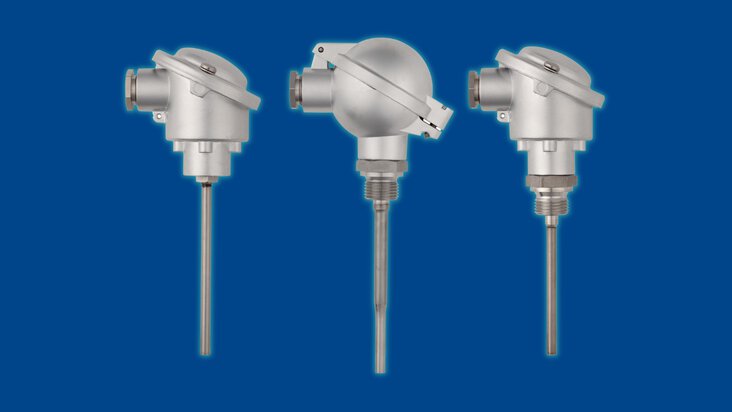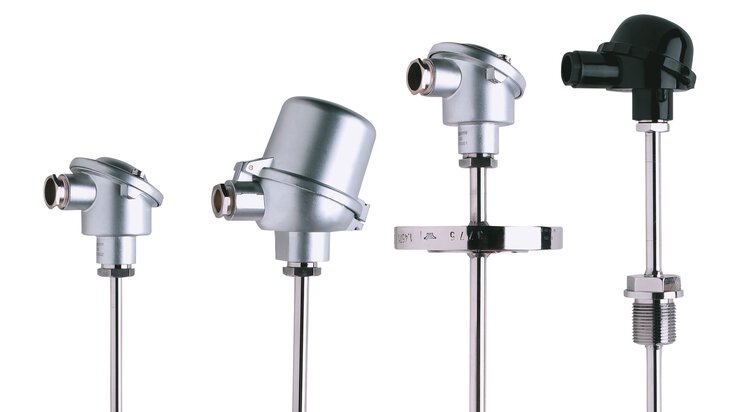

Thermocouples in practice: how does an thermocouple type S work?
One common type of thermocouple that is commonly used in high-temperature applications is the S-type. In this blog post, we will cover everything you need to know about S-type thermocouples, from their characteristics to their areas of application. Check it out!
Thermocouple - construction and principle of operation
Thermocouples (thermoelectric sensors) are temperature sensors widely used in various industries. They consist of two legs made of different precious metals, joined at one end forming a measuring junction. When this junction is heated or cooled, it creates an electrical signal from which the temperature is read. The free ends are called cold ends.
Standards and standardisation of thermocouples
The characteristics of thermocouples are standardised and the thermoelectric force values for different materials and the permissible deviations are contained in the international standard EN 60584 and ITS 90.

In a thermoelectric sensor, a thermoelectric force is created when the weld and cold ends are held at different temperatures.
What is an S-type thermocouple?
S-type thermocouples (PtRh10-Pt) are made from an alloy of platinum and rhodium. This type of thermocouple allows temperature measurements of up to 1600℃. In comparison, popular J-type thermocouples have a measuring range of up to 750℃ and K-type thermocouples up to 1200℃.
S-type thermocouple sensors also have a high level of accuracy, with a sensitivity of approximately 10 µV/°C

Type S thermocouple with ceramic sheath is more resistant to corrosion and abrasion and has a longer service life
Advantages of using an S-type thermocouple
One of the important features of the S-type thermocouple is its impressive level of accuracy, even at high temperatures. It is also long-term stable and can withstand harsh industrial conditions, making it a popular choice for demanding applications.
Furthermore, these thermocouples are resistant to oxidation and corrosion up to high temperatures. Additionally, they have a fast response time, making them ideal for processes that require rapid temperature measurement.
Type S thermocouples are ideal for measuring temperature in a variety of environments, including oxidising atmospheres, inert atmospheres and vacuum. However, without suitable shielding, S-type thermocouples are not recommended for use in reducing atmospheres.
In summary, the main advantages of Type S thermocouples are:
- wide measuring range up to 1600°C
- high accuracy, even at high temperature
- long-term stability
- resistance to harsh industrial conditions
- resistance to oxidation and corrosion
- rapid response time
- temperature measurement in a variety of environments, including oxidising, inert atmospheres and vacuum.
S-type thermocouples - applications
Due to their high-temperature range and accuracy, S-type thermocouple sensors are used in a variety of industrial applications, including furnace or gas turbine temperature monitoring and heat treatment processes. They are also ideal for industries such as aerospace, metallurgy and petrochemicals. S-type thermocouple sensors are also used in research and development applications and academic

Type S thermocouples, due to their wide measuring range, are used in high-temperature applications
Type S thermocouple installation and maintenance
Type S thermocouple sensors must be installed correctly to operate effectively. Maintenance of the Type S thermocouple is minimal and the sensors can operate for long periods of time without maintenance. However, periodic recalibration is essential to ensure accurate temperature readings.
When installing a Type S thermocouple, it is important to use suitable compensation cables to minimise the effect of ambient temperature on the measurement result. It is also important to pay attention to the thermocouple sheath material, which must be suitable for the environment in which the sensor is used.
- ${title}${badge}

